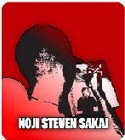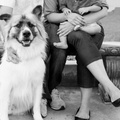He burned sensitive files while working for a foreign government. He said that he was not willing to fight for the United States and would not give up his allegiance to a foreign power during a time of war. He renounced his American citizenship. Who was this enemy of the United States?
He was my grandfather on my dad’s side. Having died before I was born, he was and has always been an enigma to me. My Aunt, my father’s older sister, doesn’t remember her father being anti-American. To her, he was a true patriot. Any suggestion otherwise doesn’t fit in with how she chooses to remember him.
Based on his actions though, most would call him a traitor. I want to believe, like my Aunt, that he was a “good” American and that he was forced to make decisions that only made him look disloyal.
This is his story, you can decide for yourself.
My grandfather’s name was Takaichi Sakai. He was born on August 10, 1903 in Pahala, Hawaii. His father had immigrated from Japan during the late 1880s, making him a nisei, or second generation Japanese American. He worked as a clerk for the Japanese consulate’s office until December 1941.
In the FBI Intelligence report I found in the national archives, they wrote that he was “more an old time Japanese than a Hawaiian-born Japanese. He was reported to be extremely pro-Japanese and anti-American in sentiment.”
According to the same document, in 1937, my grandfather and another individual seized and attempted to “manhandle” a United States photographer, who was assigned to observe the activities of a Japanese oil tanker on its visit to Hawaii.
The information found in this report should be taken with a grain of salt. It is difficult to determine what is real and what is propaganda used to justify his incarceration. Unfortunately, anyone who could answer that has long passed away.
The government goes on to write that my grandfather was taken into custody by the military authorities under a warrant authorized by the Secretary of War on October 3, 1942.
-
...He was afforded a hearing before an Internee Hearing Board, and it was brought out while before the board that [my grandfather] while working for the consulate was suspicious of the activities of several other employees but did not divulge this information to the proper authority. He admitted that around August 1, 1941, many papers from the files of the consulate were burned, and he admitted that the clerks were paid for it and told not to tell anyone that they had been burned.
The board recommended that he be interned, and the military governor, at Honolulu, Hawaii, on February 12, 1943, after a review of the evidence and the recommendation of the board, ordered that my grandfather be interned for the duration of the war. On February 24, 1943, however, the Military Governor ordered that he be released from internment and transferred to a relocation center on the Mainland.
My grandmother was given the opportunity to stay in Hawaii or go with her husband. Her loyalty to her family and her desire to keep everyone together, made the choice of going with my grandfather to the mainland easy: they were all sent to Topaz, central Utah.
While in Utah, my grandparents tried unsuccessfully to legally leave the camp and resettle in “non-military strategic” areas like the other internees. However, because of the circumstances of their incarceration they were always denied. My grandparents both answered “no no” to questions 27 (Are you willing to serve in the armed forces?) and 28 (Are you willing to swear unqualified allegiance to the United States?) on the infamous loyalty questionnaire.
I believe my grandfather’s “no no” answer was a moral protest against what had happened to him. At his age, 40 years old when Pearl Harbor was bombed, and with a wife and three children there was little chance he would have ever been drafted. On the other hand, a “yes yes” would not have been enough to win his or his family’s freedom from the camp. His answer then was his only way to protest against a government that had taken his freedom and his constitutional rights.
My grandparent’s decision got them (with their children) sent to Tule Lake in northern California. While there, he was one of thousands of American citizens who asked to be expatriated to Japan. I do not know for sure whether he gave up his citizenship willingly or because of outside pressure (from his friends or the resegregationists). Either way, he would with that decision forever brand himself a traitor – within the Japanese American community and the nation at large.
But Tule Lake was a unique American experience that unfortunately most people have little to no knowledge of. It is easy to look back now and see how a camp environment as crazy and manic as Tule Lake was, amid national panic and fear, might cause the most loyal of Americans to make decisions that on the surface may appear disloyal.
I wish I could explain away why he freely gave up his citizenship. Without being able to ask him, I can only assume he was so upset and bitter about the events post Pearl Harbor, he preferred to be in war-torn Japan than his native country.
And I would have been bitter too. All my life I’ve been taught about equal rights, the Constitution/Bill of Rights, and how America is the home of the free and the land of the brave… only to find out that it’s not for everyone and can change depending on who we are currently at war with. In that light, if I were my grandfather and everything that happened to him had also happened to me, I may have made the same decisions.
My family was then sent to Crystal City, Texas instead of Japan, where they stayed until the end of the war. They were released on August 31, 1945 with a one-way ticket back to Hawaii. They did not get their citizenship back until thirteen years later in 1958.
© 2007 Koji Steven Sakai






